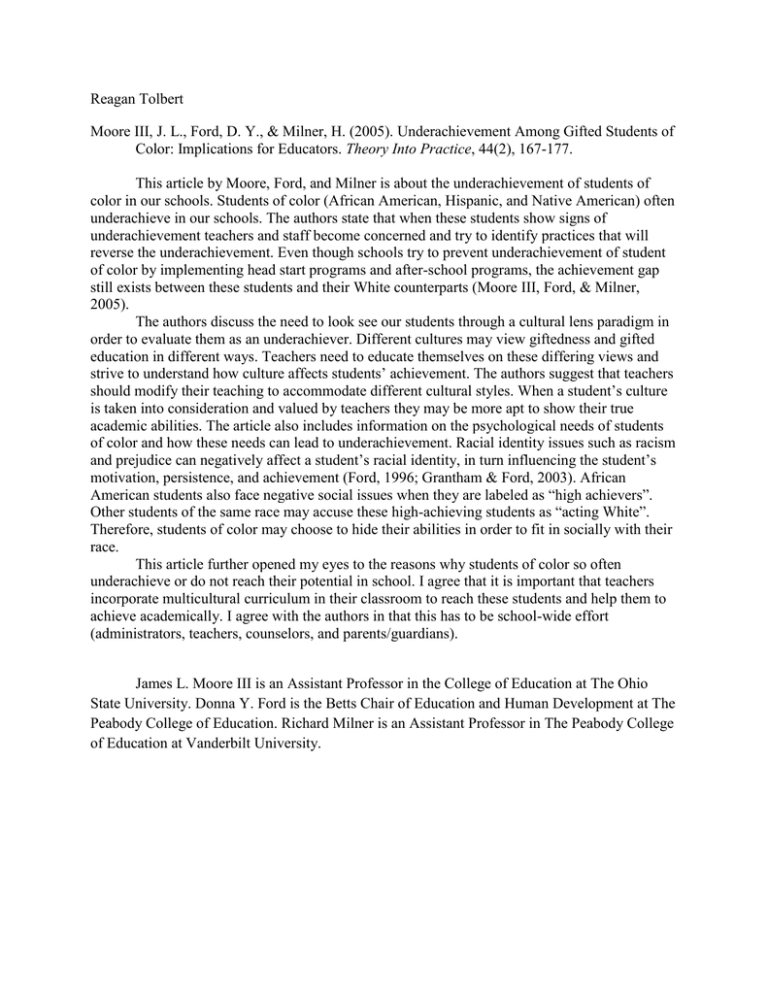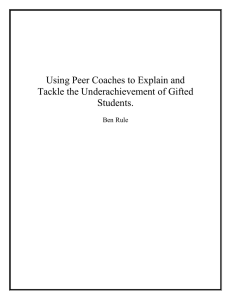chapter 12 annotated bib
advertisement

Reagan Tolbert Moore III, J. L., Ford, D. Y., & Milner, H. (2005). Underachievement Among Gifted Students of Color: Implications for Educators. Theory Into Practice, 44(2), 167-177. This article by Moore, Ford, and Milner is about the underachievement of students of color in our schools. Students of color (African American, Hispanic, and Native American) often underachieve in our schools. The authors state that when these students show signs of underachievement teachers and staff become concerned and try to identify practices that will reverse the underachievement. Even though schools try to prevent underachievement of student of color by implementing head start programs and after-school programs, the achievement gap still exists between these students and their White counterparts (Moore III, Ford, & Milner, 2005). The authors discuss the need to look see our students through a cultural lens paradigm in order to evaluate them as an underachiever. Different cultures may view giftedness and gifted education in different ways. Teachers need to educate themselves on these differing views and strive to understand how culture affects students’ achievement. The authors suggest that teachers should modify their teaching to accommodate different cultural styles. When a student’s culture is taken into consideration and valued by teachers they may be more apt to show their true academic abilities. The article also includes information on the psychological needs of students of color and how these needs can lead to underachievement. Racial identity issues such as racism and prejudice can negatively affect a student’s racial identity, in turn influencing the student’s motivation, persistence, and achievement (Ford, 1996; Grantham & Ford, 2003). African American students also face negative social issues when they are labeled as “high achievers”. Other students of the same race may accuse these high-achieving students as “acting White”. Therefore, students of color may choose to hide their abilities in order to fit in socially with their race. This article further opened my eyes to the reasons why students of color so often underachieve or do not reach their potential in school. I agree that it is important that teachers incorporate multicultural curriculum in their classroom to reach these students and help them to achieve academically. I agree with the authors in that this has to be school-wide effort (administrators, teachers, counselors, and parents/guardians). James L. Moore III is an Assistant Professor in the College of Education at The Ohio State University. Donna Y. Ford is the Betts Chair of Education and Human Development at The Peabody College of Education. Richard Milner is an Assistant Professor in The Peabody College of Education at Vanderbilt University.








